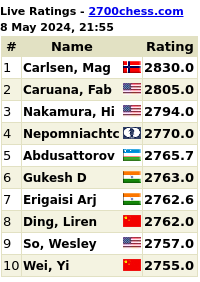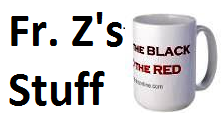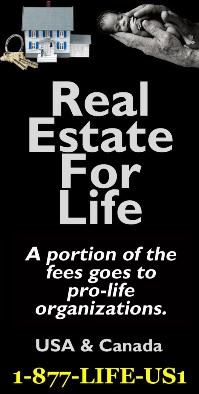HR 4969 – the “Amateur Radio Parity Act of 2014” – was introduced into the 113th Congress. This bipartisan effort would direct the FCC to extend the “reasonable accommodation” provisions for Amateur Radio antennas to include all types of land-use regulation, including deed restrictions and restrictive covenants.
Effectively, the bill will help to ensure that every ham in these USA, regardless of the community they live in, will have the opportunity to practice their avocation from their own homes without breaking any rules or fear of reprisal. Well… less fear, I guess, given this administration.
Contact your representative. HERE Pick up the phone and CALL. Go HERE for other ways to make your voice heard.
I am also going to tell my congressman that I want him to co-sponsor the bill and that I will be checking from time to time to watch for his name. If he does, I will tell others that I am pleased. If he doesn’t, I will tell people that I am very displeased.


































It also will keep HOAs from exercising their sometimes dictatorial powers of telling people what they can and can’t do. Now, if we could only get this extended to flag poles.
This bill is terribly written. “Antenna structure at heights and dimensions sufficient to accommodate amateur service communications.” Really? At what frequency? What if my neighbor’s “sufficient accommodation” involves erecting a tower ten feet from my house? Covenants and deed restrictions are designed to create good neighbors and protect property values. When you bought the property, you signed your name and promised to abide by them. Every operator should look for reasonable language in the documents when considering a new home, such as height restrictions as a multiple of the highest point of the domicile, a limit on total linear footage and number of structures. If you don’t like what’s in the documents, don’t buy a home there.
dochm13, you sound just like the people who opposed our Parish’s bell tower, and the chapel at my children’s school.
Functionally, it is simply an extension of the Over the Air antenna rule that ALREADY exists for Tom Dick and Harry that has to have their 300 channels of crap.
If you want the bill to be more explicit, you can lobby for changes to it. The thing hasn’t even gone through the Committee process yet.
Over-the-Air Reception Devices Rule
Preemption of Restrictions on Placement of Direct Broadcast Satellite, Broadband Radio Service, and Television Broadcast Antennas.
Quick Links to Document Sections Below
As directed by Congress in Section 207 of the Telecommunications Act of 1996, the Federal Communications Commission adopted the Over-the-Air Reception Devices (“OTARD”) rule concerning governmental and nongovernmental restrictions on viewers’ ability to receive video programming signals from direct broadcast satellites (“DBS”), broadband radio service providers (formerly multichannel multipoint distribution service or MMDS), and television broadcast stations (“TVBS”).
The rule (47 C.F.R. Section 1.4000) has been in effect since October 1996, and it prohibits restrictions that impair the installation, maintenance or use of antennas used to receive video programming. The rule applies to video antennas including direct-to-home satellite dishes that are less than one meter (39.37″) in diameter (or of any size in Alaska), TV antennas, and wireless cable antennas. The rule prohibits most restrictions that: (1) unreasonably delay or prevent installation, maintenance or use; (2) unreasonably increase the cost of installation, maintenance or use; or (3) preclude reception of an acceptable quality signal.
Effective January 22, 1999, the Commission amended the rule so that it also applies to rental property where the renter has an exclusive use area, such as a balcony or patio.
On October 25, 2000, the Commission further amended the rule so that it applies to customer-end antennas that receive and transmit fixed wireless signals. This amendment became effective on May 25, 2001.
The rule applies to individuals who place antennas that meet size limitations on property that they own or rent and that is within their exclusive use or control, including condominium owners and cooperative owners, and tenants who have an area where they have exclusive use, such as a balcony or patio, in which to install the antenna. The rule applies to townhomes and manufactured homes, as well as to single family homes.
The rule allows local governments, community associations and landlords to enforce restrictions that do not impair the installation, maintenance or use of the types of antennas described above, as well as restrictions needed for safety or historic preservation. Under some circumstances where a central or common antenna is available, a community association or landlord may restrict the installation of individual antennas. The rule does not apply to common areas that are owned by a landlord, a community association, or jointly by condominium or cooperative owners where the antenna user does not have an exclusive use area. Such common areas may include the roof or exterior wall of a multiple dwelling unit. Therefore, restrictions on antennas installed in or on such common areas are enforceable.
Things appear somewhat saner in Canada, where Industry Canada sets out the policies HAMs are required to follow when erecting or modifying attena structures. For those who may not know, operation of MF or HF radios can require extremely large attenae, which (greatly oversimplifying here) should ideally be a half wavelength long of the band on which you wish to transmit. Given one of the amateur bands accessible in Canada for long distance propagation is 160m (about 480 feet) long (in fact, wavelenghts used for some non-amateur LF bands can be 10,000 Km long!), you can see why very long attenae are sometimes preferred!
In essence, our rules 1) Provide exemptions for some attenae that don’t need to go through all steps outlined in the processes, 2) Require, where they exist, that HAMs work within local rules and processes and 3) Set out a default public consultation process to be followed where none exists. A separate dispute resolution process is also established for some situations where agreement cannot be reached.
FYI: Passed by Basic Honours exam recently, and am awaiting assignment of my selected call sign, which you’ll like – my region prefix+BVM
Yet the oddest subject matter ever to emanate from a diocesan priest. I guess Father has gotten the smell of sheep on him! Or the lovely smell of warming Bakelite and solder flux from the inside a tube filled transceiver.
Just think what you could do with Parish grounds. A 80 meter yagi and a full run beverage antenna all exempt from local regulations…
Sorry folks but having been a licensed amateur radio operator since 1958 I disagree with this legislation and predict it will go nowhere. In those years of my ham career when I lived under HOA rules I still managed to get on the air (VHF and HF) and in fact worked the world with very stealthy antennas. Granted I now live on a ranch with no antenna restrictions but still believe that when one makes the choice to live in an HOA impacted development s/he knows what the rules are and should abide by them. Ham radio is a hobby and there are many other hobbies which cannot be practiced in an HOA neighborhood. Why should ham radio be any different?
The ARRL in pushing this legislation is using the bogus argument that hams living in HOA’s are critical to emergency communications and must have certain antennas to engage in that. In fact, given the sophistication and redundancy of today’s public safety communications systems hams provide very little of what can honestly be called emergency communications.
Don’t want antenna restrictions? Don’t move to an HOA neighborhood.